
The Amazon Rainforest is fast gaining international recognition for its vibrant and ever-evolving cuisine. Its incredible biodiversity gives rise to an astonishing variety of fresh and exotic ingredients, many of which are relatively unknown outside the region.
Although most travelers come for the wildlife, another highlight of a visit to the Amazon is the chance to sample many of the region’s best dishes, some traditional and some with a more modern twist, but all drawing heavily on local ingredients and the unique flavors of the surrounding rainforest.
Here we provide an overview of the typical ingredients that feature heavily in Amazon Rainforest food, and a list of our favorite mouth-watering Amazonian dishes to try:
Given the sheer size of the Amazon River and its tributaries, it’s unsurprising that freshwater fish forms the main source of protein in the Amazonian diet. The sheer variety of fish to be found in the region is almost limitless, but there are some firm favorites that are particularly flavorsome and have long been considered mainstays of the region’s cuisine.
All the fish you’ll encounter in the Amazon will likely be extremely fresh and flavorful. You’ll typically encounter fish in a wide variety of forms and dishes, either grilled, fried, steamed, or blended into a myriad of different sauces and stews. Combining fish either with tomatoes, coconut milk, or tucupi (a yellow sauce made of manioc juices popular throughout northern Brazil) is also very common.
In Peru, the paiche (one of the largest freshwater fish in the world) is a very popular and filling option, with a meaty texture not dissimilar to steak. Catching one of these prized fish can be enough to keep a large family going for an entire week. Other exceptionally delicious fish to watch out for include the pirarucu, the tambaqui, the jaraqui, and the surubim.
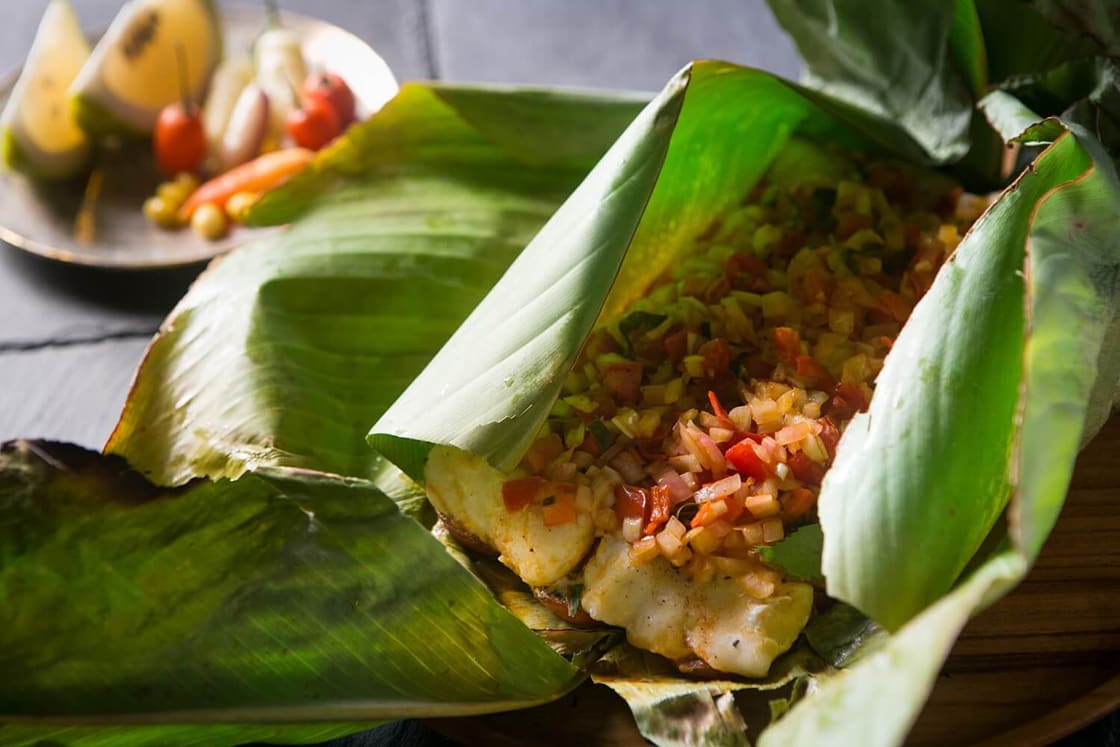
Patarashca de Doncella; Grilled Tiger Catfish Wrapped in Bijao Leaf
Patarashca is one highly renowned dish, consisting of fish grilled with a variety of vegetables such as onions, tomatoes, chilies, and coriander, all wrapped and cooked to perfection in a large bijao leaf.
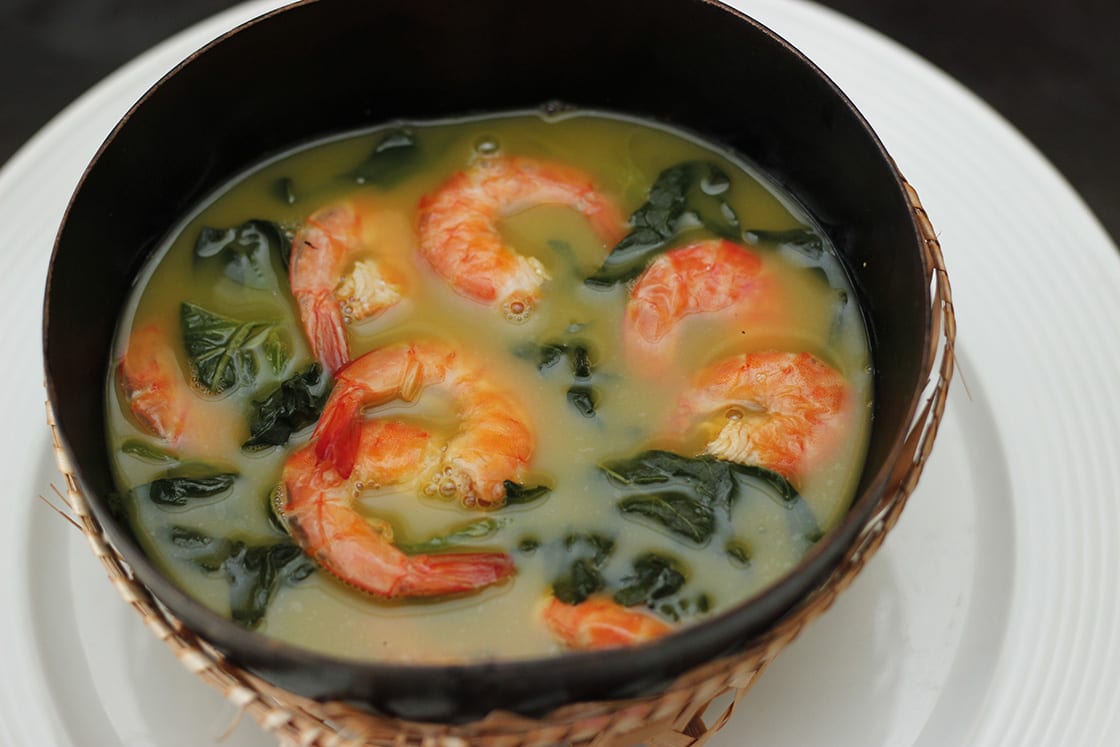
Tacacá, Typical Of The Amazon
Also, keep an eye out for Tacacá, a delicious shrimp soup from the Pará region of Brazil often served as street food. It is a broth made with wild manioc, jambu (a native variety of paracress), and small yellow peppers.
Although not as prevalent given the nature of the region, there is still a wide variety of filling meat dishes to choose from. Cecina (pork) is perhaps the most common.
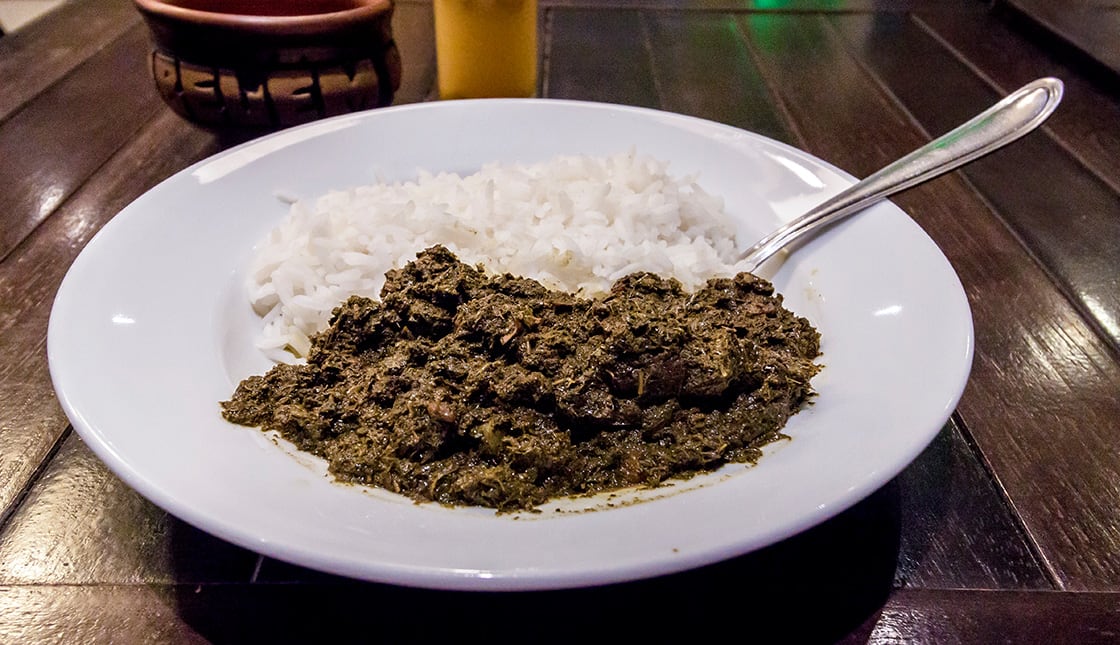
Manicoba Is A Traditional Dish Of The Brazilian Cuisine
In Brazil, maniçoba, is a dish made from the leaves of the manioc plant (which need to be simmered for seven days to remove poisonous hydrocyanic acid) combined with various pieces of bacon, sausage, and other types of salted pork.
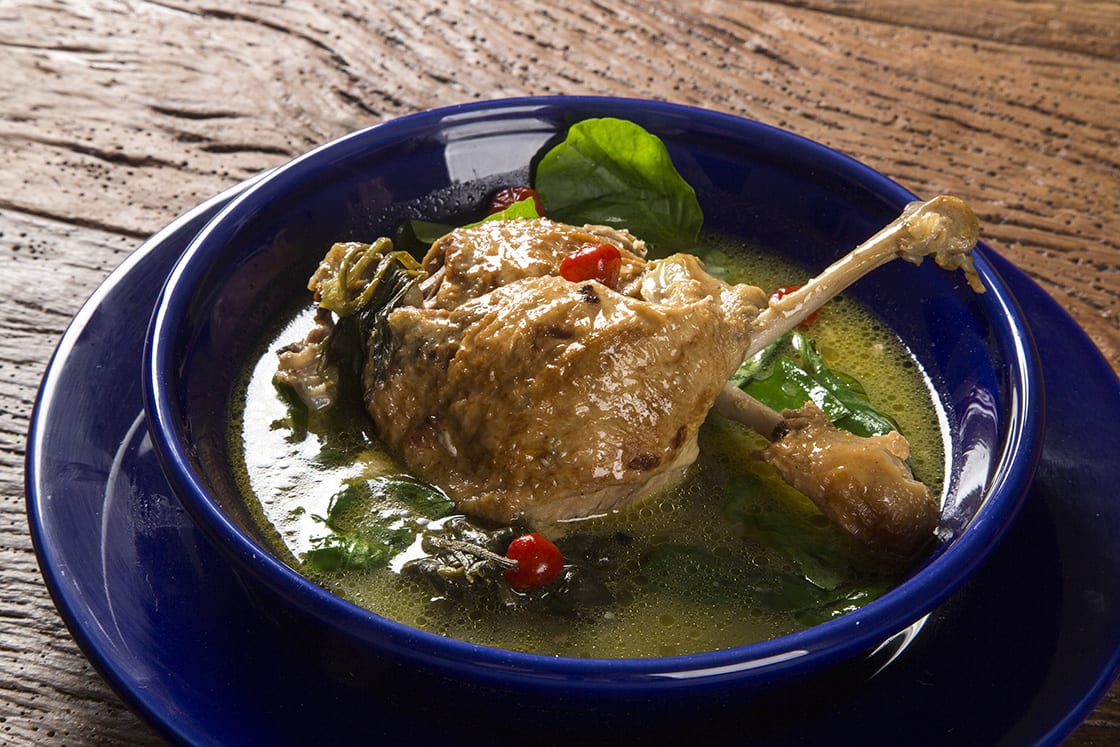
Duck With Tucupi Sauce And Pepper
Perhaps the most famous dish of the Brazilian Amazon is the distinctive pato no tucupi (duck served in exotic-tasting tucupi sauce), a traditional local favorite especially popular during holiday periods. The duck is roasted, shredded, and cooked with garlic, chicory, basil, and tucupi, and then served over rice with hot pepper and a sprinkling of fermented manioc flour.
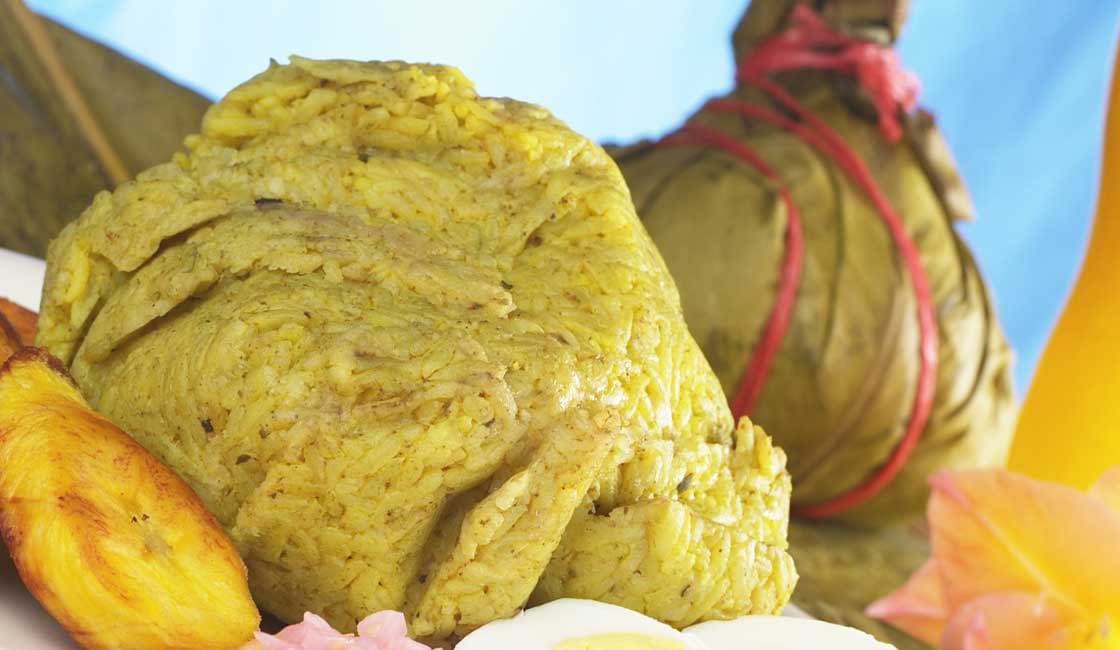
Juane, Traditional Peruvian Dish
Meanwhile, in Peru, you’re bound to come across the Juane, a specialty popular all over the jungle region. Whilst not always made with meat (fish and veggie-based versions are common too) this not-to-be-missed dish typically consists of chicken, rice, olives, hard-boiled egg, and turmeric all tightly wrapped in banana leaves, left to boil, and often served with fried plantain.
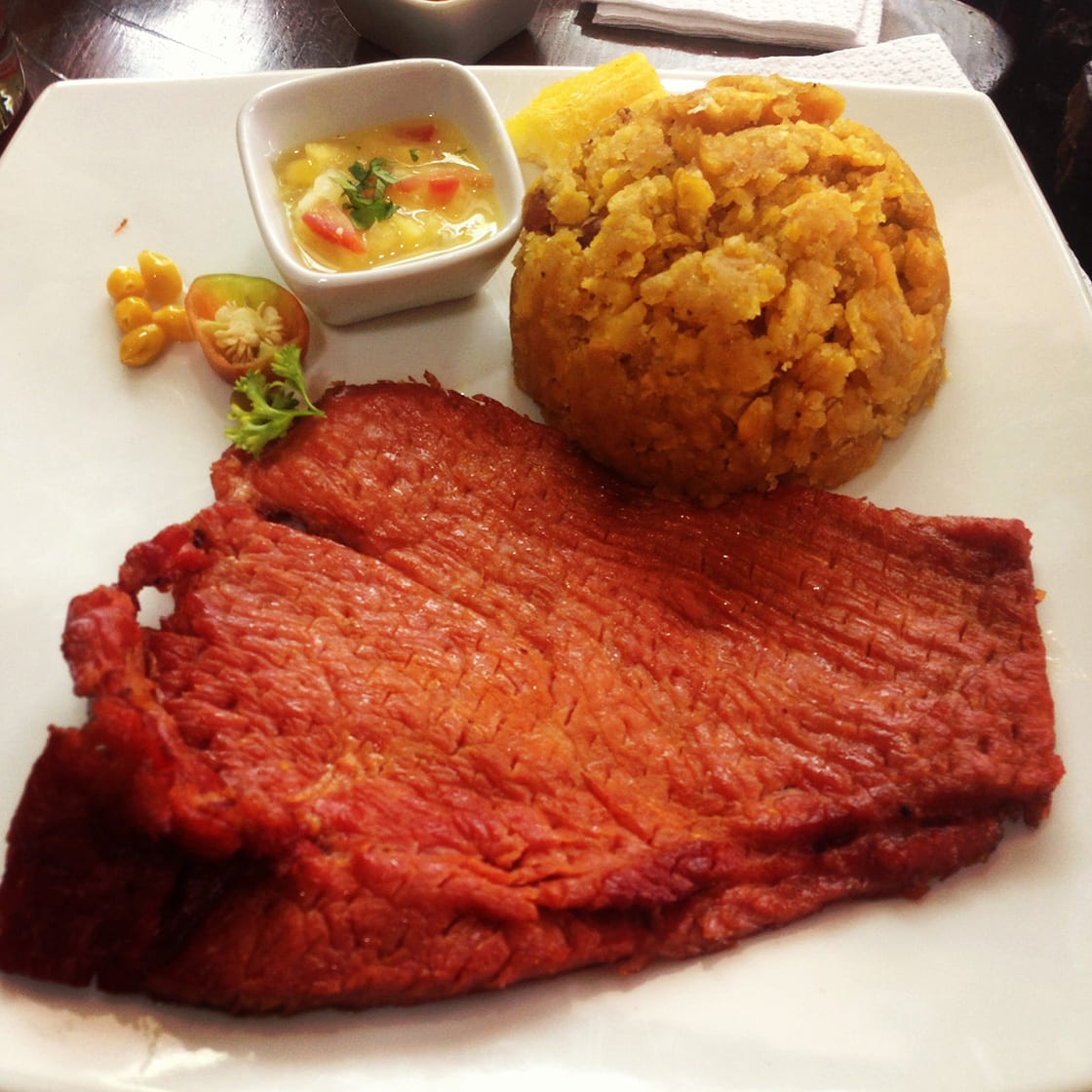
The Traditional Amazonian Dish Of Cecina And Tacacho
Tacacho is a specialty of Iquitos and the wider Peruvian Amazon, which is very popular at breakfast time. Plantains are grilled or boiled, peeled, and then mashed in a mortar with small pieces of pork rind, lard, and plenty of salt which are then shaped into balls or patties. They are then served with cecina, dried, smoked pork made with traditional spices from the jungle.
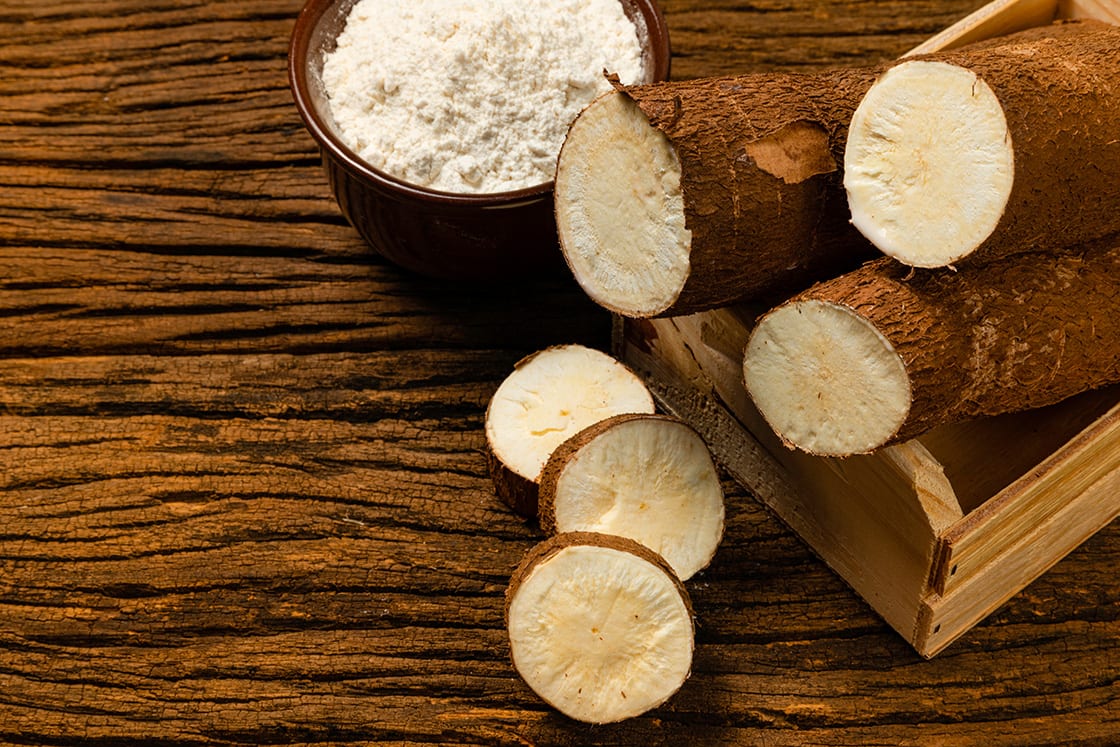
Cassava, Yuca, Manioc, Mandioca, Tapioca
Also commonly known as cassava or yucca, manioc is the ubiquitous starchy root vegetable of the region. Traditionally, it’s acted as the main source of carbohydrate for Amazonian people, filling the niche of the potato. In the Brazilian northeast, is commonly turned into manioc flour by grating and being left out to dry under the sun, and is pretty much used in everything. Manioc is a core component of many popular dishes such as maniçoba and pato no tucupi, Brazilian specialties highlighted above. You’ll also find this delicious ingredient served as large succulent fries, in stews, or thinly sliced as a great snack alternative to chips.
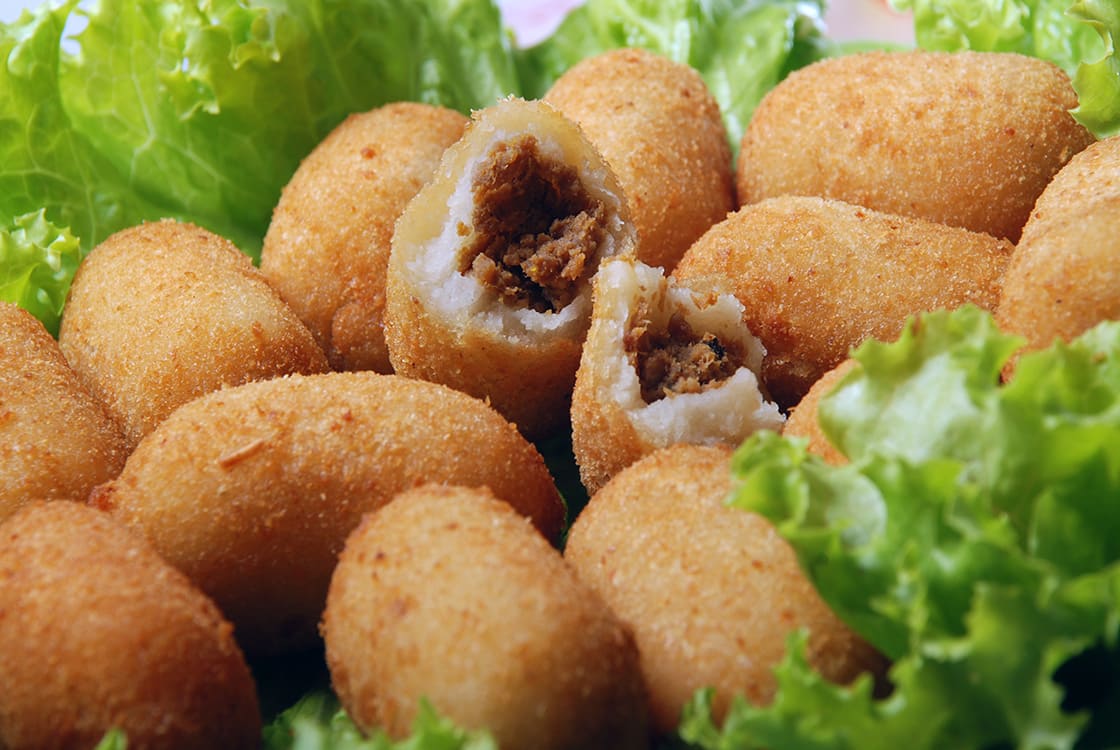
Delicious Brazilian Snack Of Mandioca
This delicious Brazilian snack is often served as an appetizer and just fits in your mouth perfectly. Cooked manioc is then mashed and stuffed with cheese and deep-fried in hot oil to create manioc dumplings that conceal an oozy cheesy filling inside.
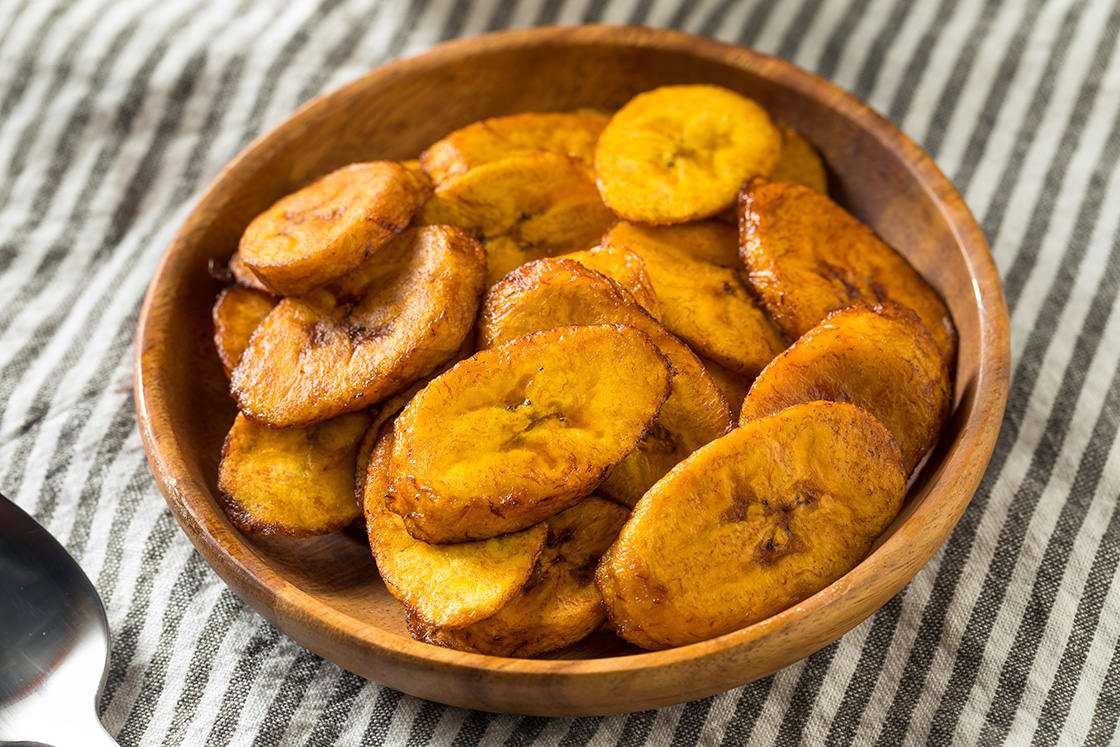
Homemade Fried Plantains
Plantains are an unripe fruit similar to bananas, though not sweet, and can only be eaten after cooking by steaming, boiling, or frying (they cannot be eaten raw). In a savory dish, they have a similar texture and flavor to potatoes, and indeed their starchy nature makes them more similar to a vegetable than fruit from a cooking perspective. Plantains are popular in a wide variety of desserts, often fried and combined with sweet fruits.

Patacon Or Toston, Fried And Flattened Pieces Of Green Plantain
This is probably the most common way of serving plantain, as double-cooked chips that are crispy on the outside and soft inside. The technique involves using very green plantains, peeling them, and cutting them into two or three parts. They are then partially cooked in hot oil, then smashed flat, and then deep-fried until golden.
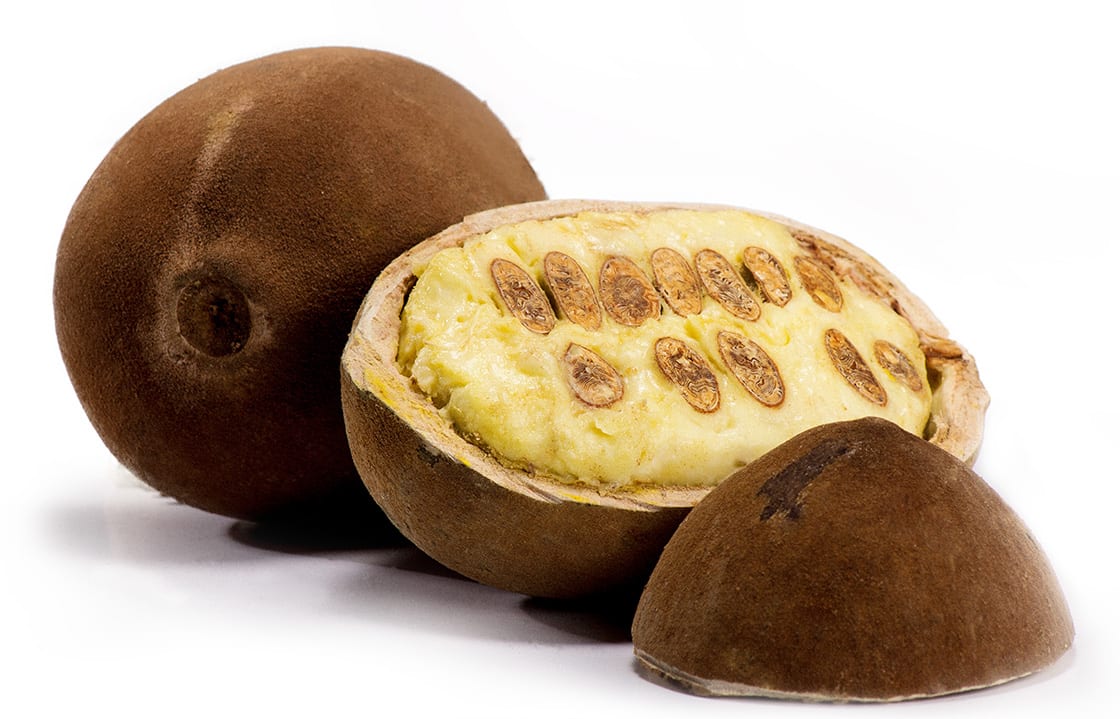
Cupuacu Fruit
The Amazon jungle is filled with a huge number of sweet, succulent, and exotic fruits used to make a wide variety of colorful drinks, desserts, and sauces. Brazil’s antioxidant-loaded açaí berry has gained worldwide notoriety as a superfood. Meanwhile, many other fruits such as the acerola, the graviola, or the cupuaçú. remain relatively unfamiliar to most outsiders. In Peru, one of the most popular Amazonian super fruits is the camu camu, which contains an astonishing amount of vitamin C. All these fruits are used to make cocktails, ice-creams, breakfast juices, and even incorporated into savory dishes to create exotic and unexpected flavor combinations.
This Brazilian fruit is cacao’s lesser-known, tangy cousin. It has an almost pineapple scent and a chocolatey flavor and makes delicious ice cream (or any other kind of dessert for that matter). All it takes is a blender, some condensed milk, limes, and frozen cupuaçú.
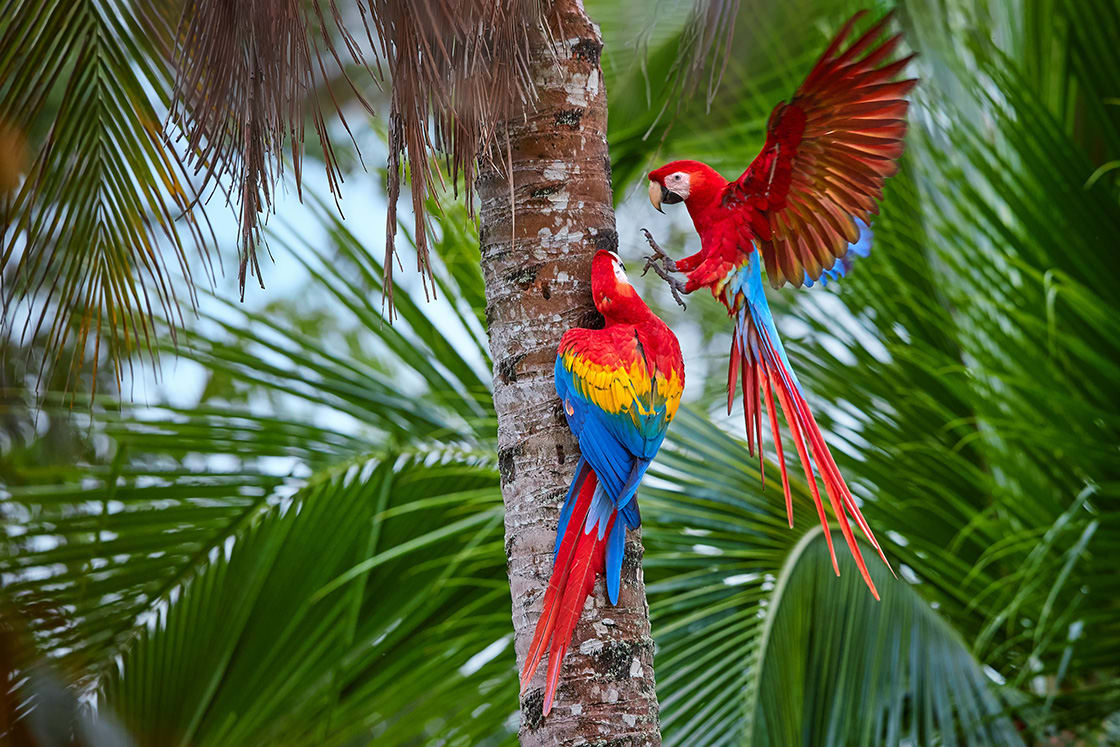
Pair Of Big Red Colored Macaw On A Palm Tree
A special mention needs to go to the Amazonian palm trees, whose constituent materials are used for anything from construction to cooking and cuisine. Cooking-wise, their leaves are often used to bind and wrap many ingredients together before cooking in a variety of ways, their natural oils, and fragrance complementing the complex seasonings trapped inside. From a cuisine perspective, the succulent heart of palm found inside forms the basis of many salads in the region.

Fresh Heart Of Pacl With Brazilian Nut Oil Salad
Made with raw hearts of palm cut in strings like fettucini and seasoned with local spices, this salad may look plain, as it usually does not include any other vegetable, but it is extremely fresh and bursting with flavor. It is a great option for vegetarians.
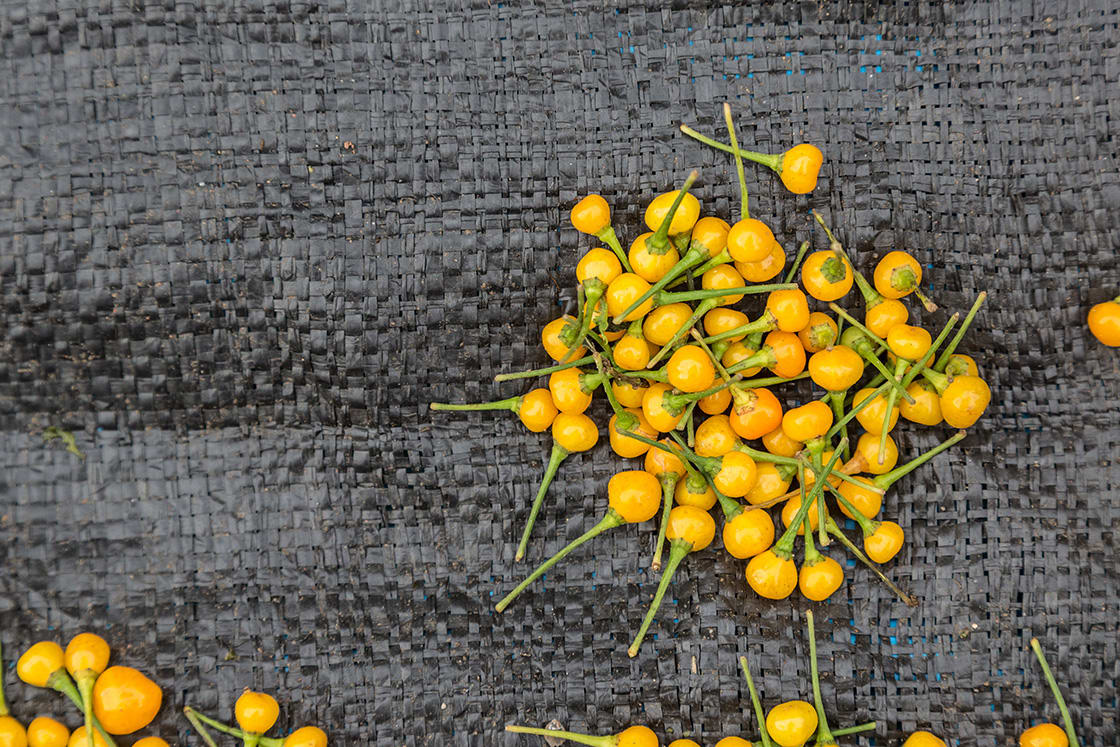
Charapita Hot Pepper
The genera Capsicum species, to which all peppers belong, originated in the Amazon Rainforest. Here you will find the greatest concentration of wild pepper species, including the red Amazon Pepper, with its light, fiery flavor with hints of celery, and the ají charapita, a tiny pepper 10 times hotter than a jalapeño. They are used to spice up rice, yuca, and plantain dishes and are the basis for many sauces.
Common to the Peruvian Amazon, this sauce is a popular accompaniment to many Amazonian dishes and involves mixing raw onion slivers, tomatoes, lime and lemon juice, some coriander, and anywhere between a teaspoon to a tablespoon of chili sauce made from the charapita pepper, dependent on how spicy you like it.
Have we whetted your appetite for a visit to the Amazon? If you are lucky enough to take an Amazon river cruise, you’ll have the chance to sample traditional Amazon Rainforest food on a daily basis, with their authentic menus using the freshest local ingredients. If you are heading to Peru but not going to the Amazon, you may like to consider visiting Lima’s Ámaz, the Amazonian restaurant of famous chef Pedro Miguel Schiaffino, who is also the consulting chef for the Aria Amazon and Aqua Nera riverboats.
While Rainforest Cruises aim to provide accurate and up-to-date information, we make no representations as to the accuracy or completeness of any information herein or found by following any link on this site. Rainforest Cruises cannot and will not accept responsibility for any omissions or inaccuracies, or for any consequences arising therefrom, including any losses, injuries, or damages resulting from the display or use of this information.




